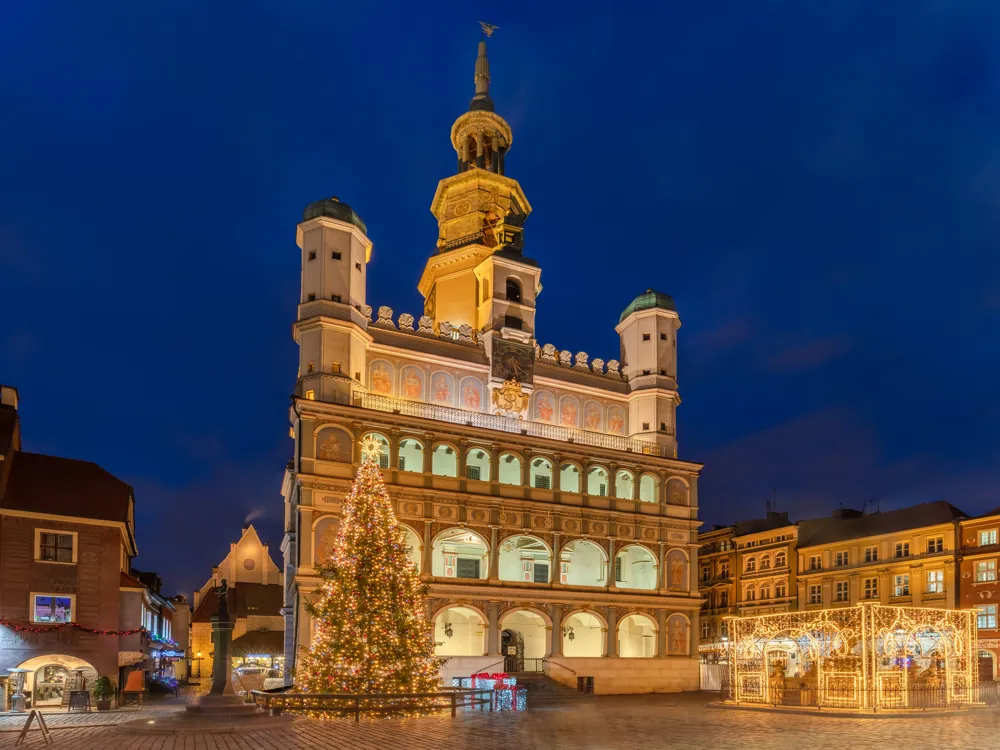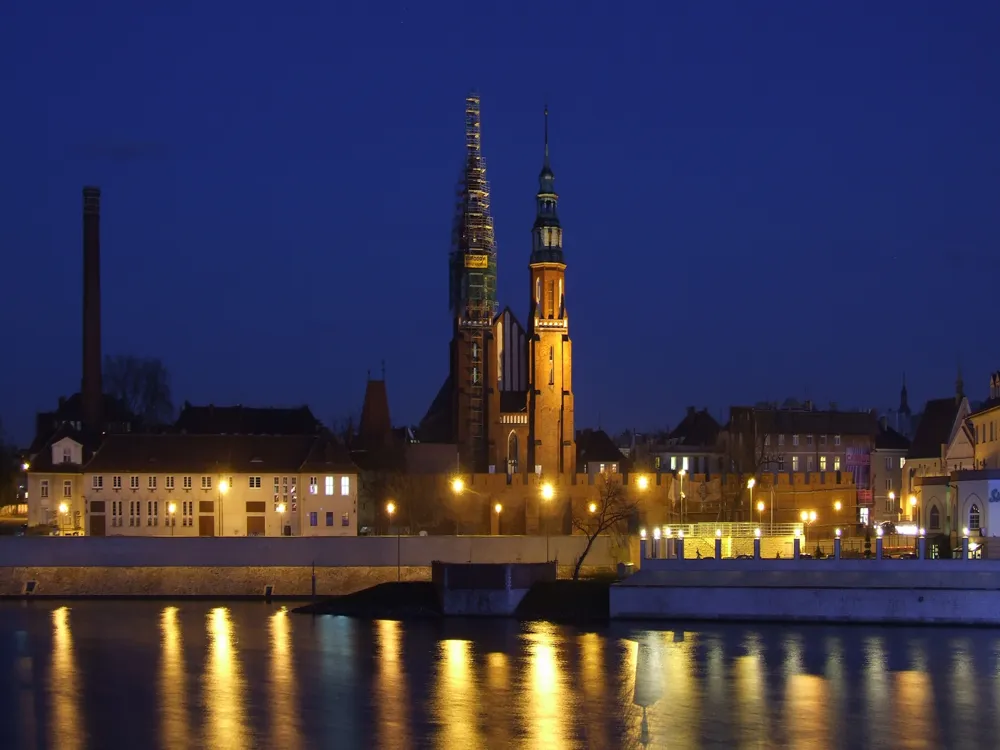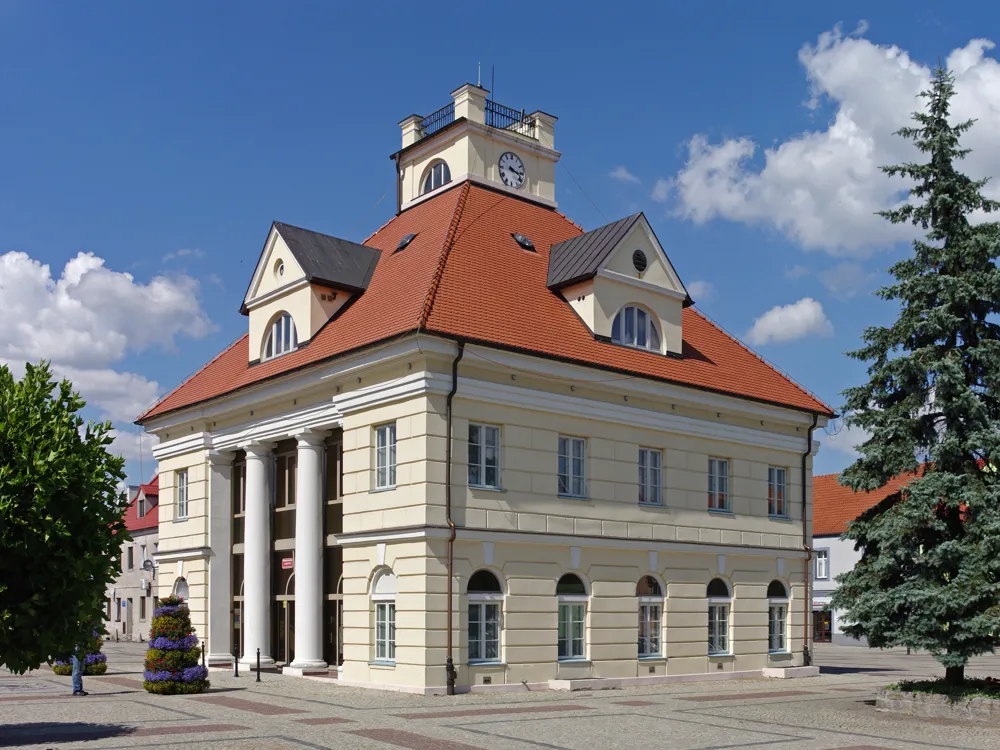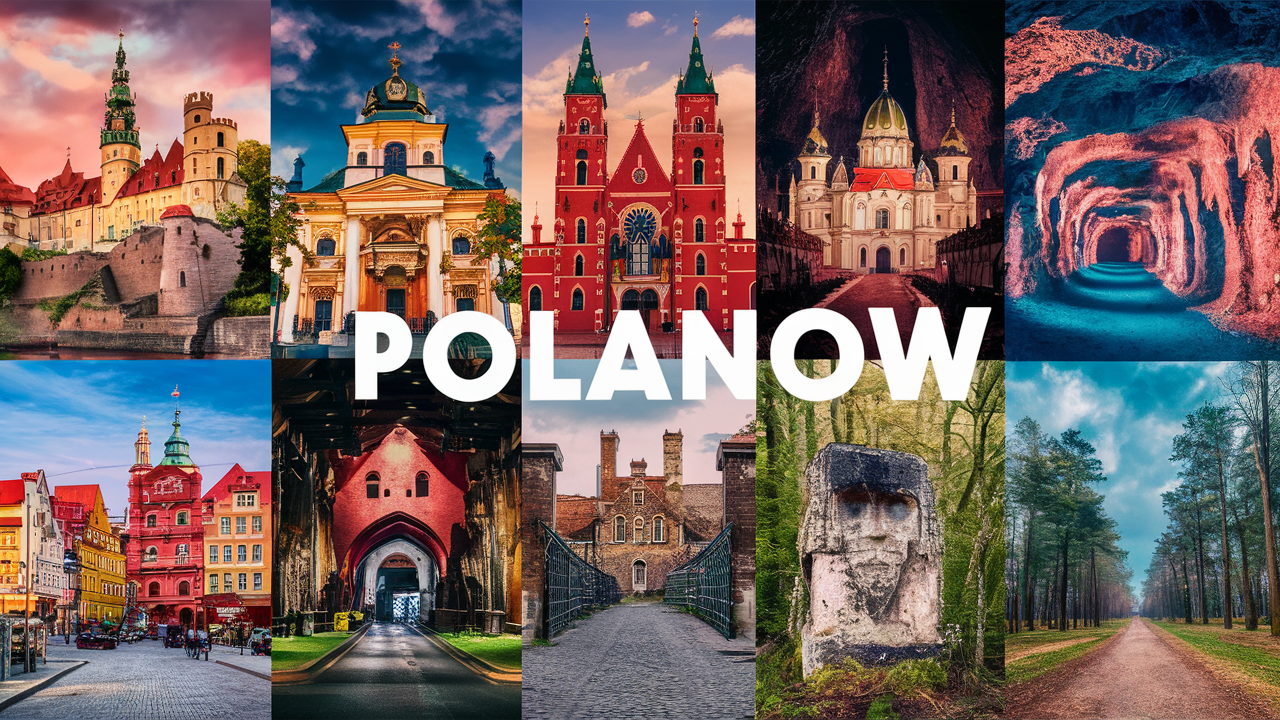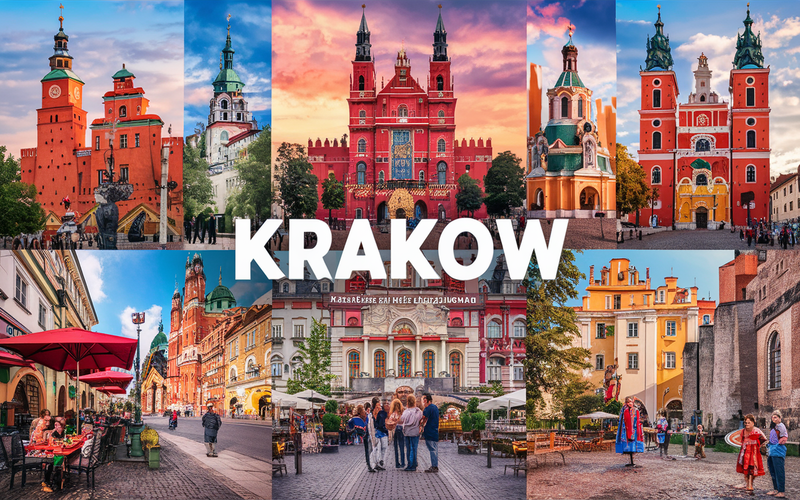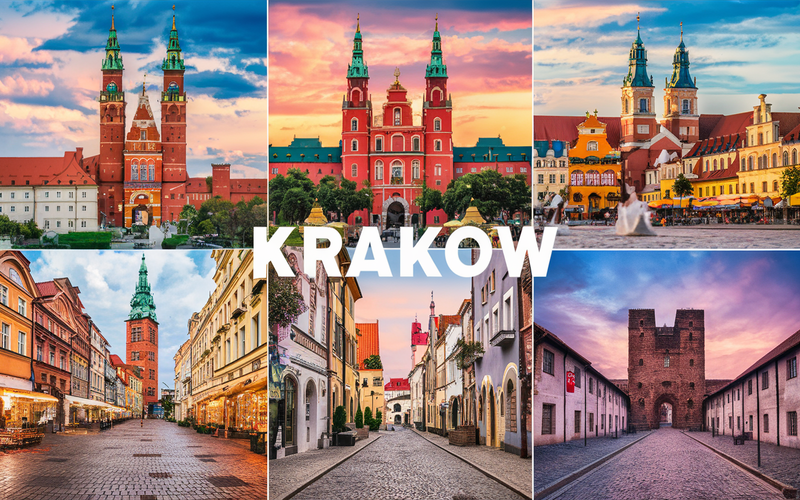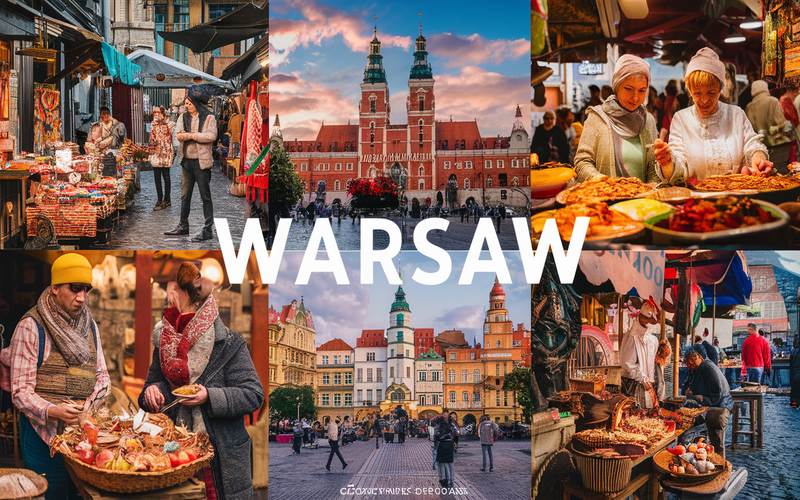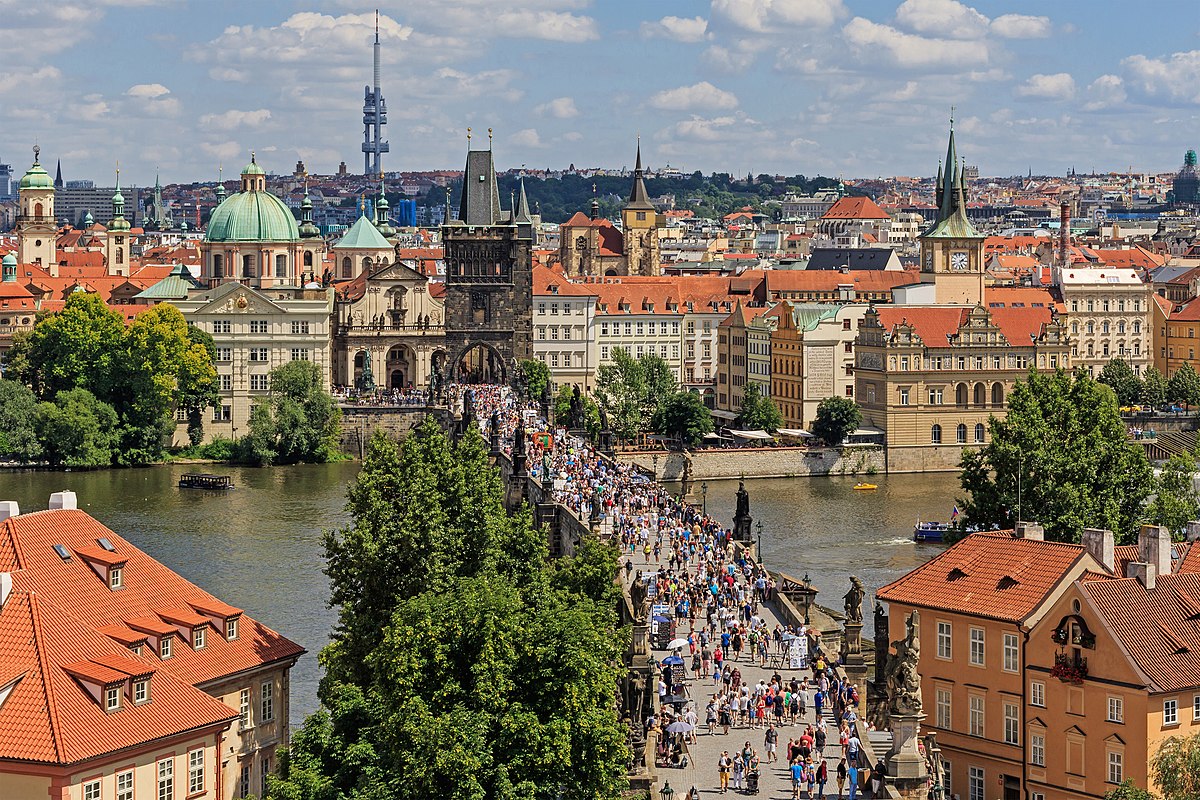Plan Your Travel To Poland
Poland Travel Essentials
Ideal Duration: 10 - 14 days
Currency: (PLN)
Best Time: March to May and September to November Read More
Budget: Affordable
"The Country With A Quiet Charm"
Poland Tourism
Poland is a gem of Europe, a country rich in natural beauty, rich history, and lively culture. Warsaw, the capital, is a vibrant city with several museums and a beautifully restored Old Town. Discover the historical significance of Auschwitz, the mediaeval beauty of Krakow, and the Teutonic Castle in Malbork. The Tatra Mountains, the immaculate Masurian Lakes, and beautiful farmland interspersed with quaint towns comprise Poland's scenery. Experience Polish food, such as pierogi and kielbasa, and become engrossed in customs, such as the vibrant Easter celebrations. Poland welcomes visitors to see its rich history, breathtaking scenery, and genuine charm. It is a country known for its kind hospitality and rich cultural legacy.
Must Know Before You Travel to Poland
- Visa Requirements: Check the visa requirements for your nationality before traveling to Poland. EU citizens can enter with just an ID card, while others may need a visa.
- Currency: The currency is the Polish Zloty (PLN), so exchange some money upon arrival.
- Language: Polish is the official language, but English is widely spoken, especially in tourist areas.
- Weather: Pack accordingly, as Poland experiences all four seasons. Summers are warm, while winters can be extremely cold.
- Transportation: Poland has an efficient railway system and a network of buses for getting around. Taxis and ride-sharing services are also readily available.
- Public Transportation: Poland has an extensive and efficient public transportation system, including trains and buses. Public transportation is a popular and cost-effective way to explore the country.
- Cultural Etiquette: Poles appreciate polite behavior. It's customary to greet with a handshake, and addressing people with their titles, such as "Pan" for Mr. and "Pani" for Mrs., is common in formal situations.
- Healthcare: European Health Insurance Card (EHIC) holders may be entitled to emergency healthcare. However, consider obtaining travel insurance that covers medical expenses.
- Food and Drink: Polish cuisine is diverse, and trying traditional dishes is a must. Be open to trying pierogi (dumplings), kielbasa (sausage), and various soups. Tap water is generally safe to drink.
- Time Zone: Poland operates on Central European Time (CET), which is GMT+1.
- Electricity: The standard voltage is 230V, and the frequency is 50Hz. The power plugs and sockets are of the Type C and Type E standards.
- Wi-Fi and Connectivity: Wi-Fi is widely available in hotels, restaurants, and public spaces. If you need mobile data, consider getting a local SIM card.
- Safety: Poland is generally safe for travelers. However, exercise standard precautions, especially in crowded places, and be aware of your belongings to prevent petty theft.
- Duty-Free Allowances: Familiarize yourself with duty-free allowances for items like alcohol and tobacco when entering Poland.
Tourist Places to Visit In Poland
Warsaw
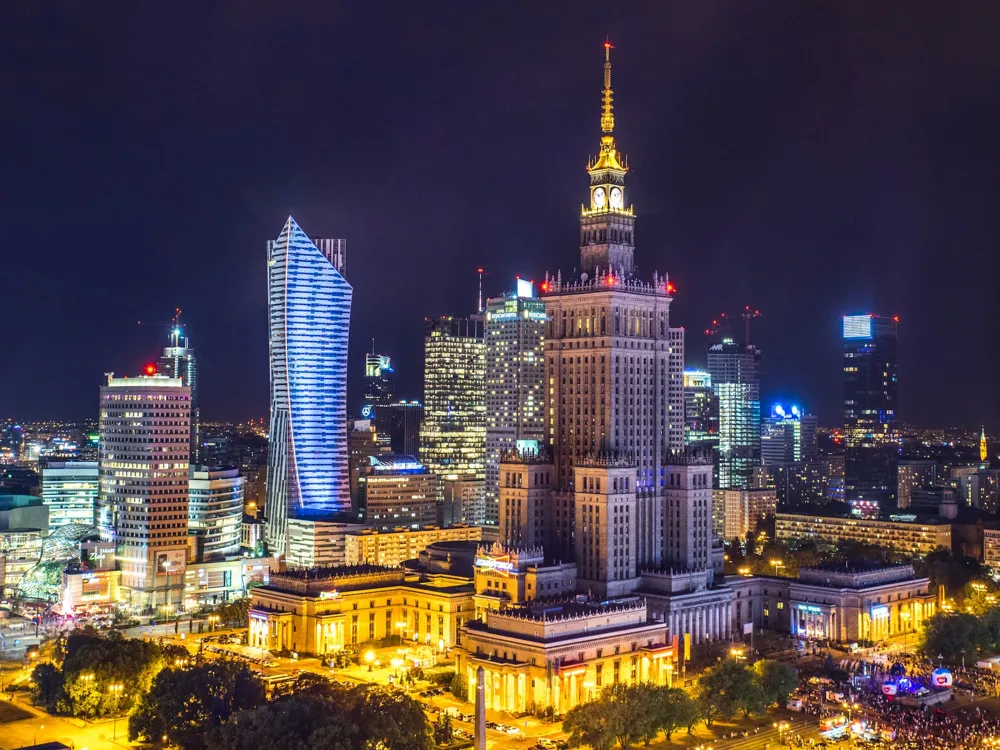
Krakow
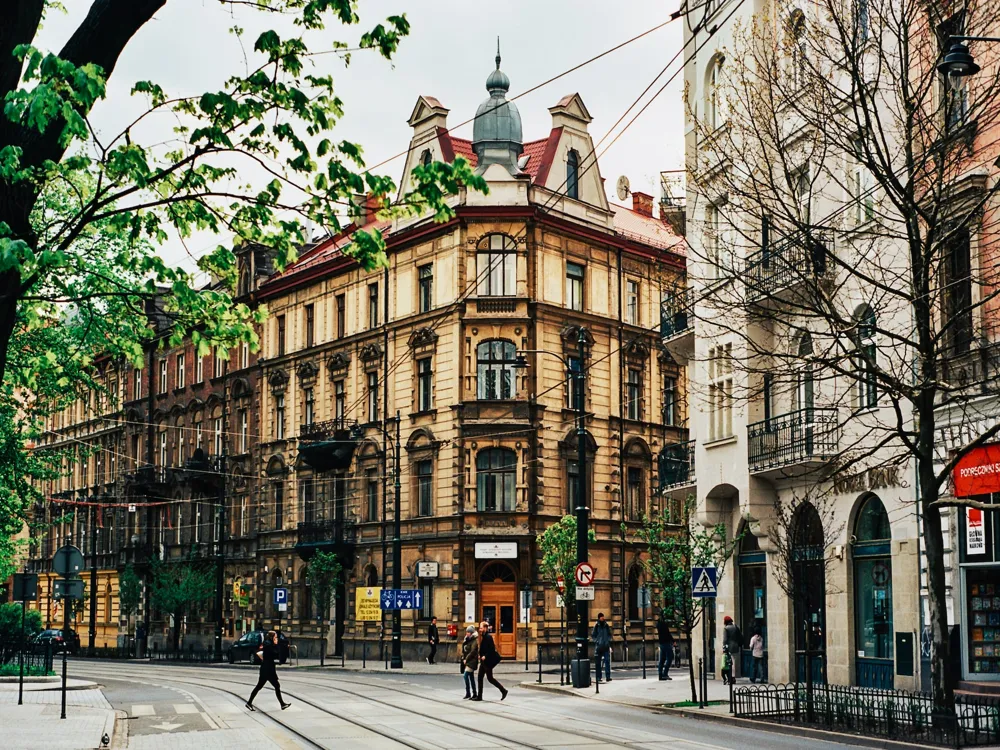
Auschwtiz
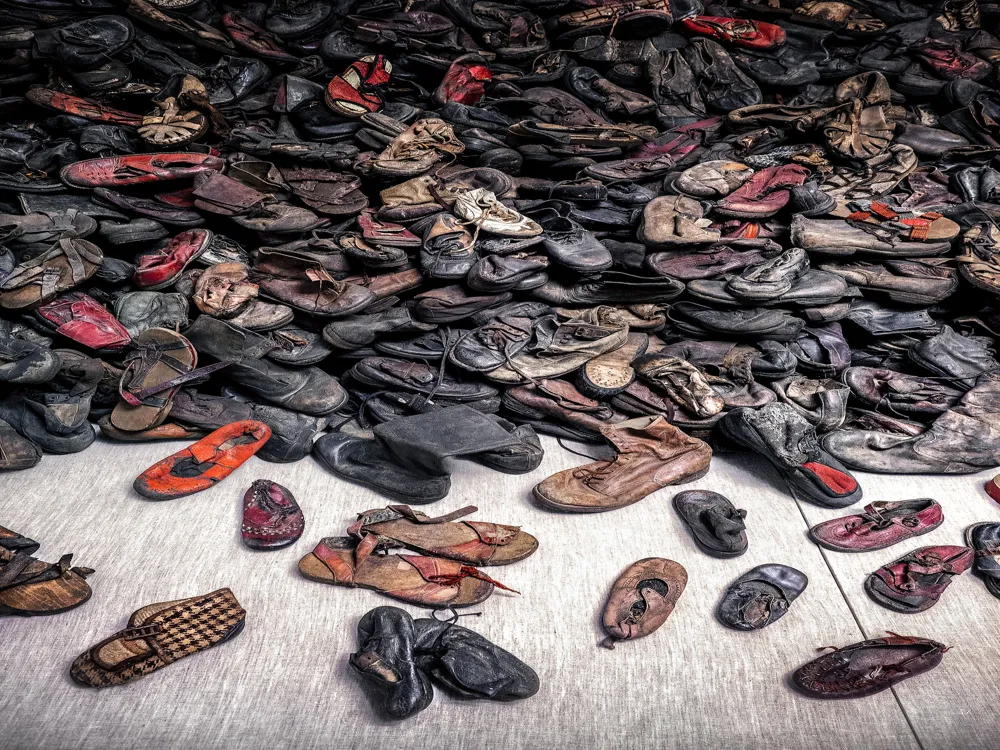
Poland Travel Packages
Compare quotes from upto 3 travel agents for free
View All Packages For Poland
More on Poland Travel
All collections about Poland
Best time to visit Poland
Like many countries in Europe, Poland is an excellent place to travel all year, depending on your choice of weather. However, the best time to visit Poland is during spring (March–May) and fall (September–November). This country has a typical European temperate climate with six distinctive seasons where summers are mostly hot and wet while winters are frigid. Despite these seasons and their typical conditions, the weather in Poland is highly unpredictable. During spring and autumn, the weather is neither too hot nor too cold and is just pleasant for roaming in and around the cities of Poland and engaging in several events and activities that Poland has to offer. From a tourism point of view, summertime in Poland is fully crowded, so fewer tourists travelling during this period is an added advantage, so you won’t have to wait in a long queue outside the tourist spots. fall (September-November). This country has a typical European temperate climate with six distinctive seasons where summers are mostly hot and wet while winters are frigid. Despite these seasons and their typical conditions, the weather in Poland is highly unpredictable. During spring and autumn, the weather is neither too hot nor too cold and is just pleasant for roaming in and around the cities of Poland and engaging in several events and activities that Poland has to offer. From a tourism point of view, summertime in Poland is fully crowded, so fewer tourists travelling during this period is an added advantage, so you won’t have to wait in a long queue outside the tourist spots.
Top Stories about Poland Tourism
Read More on Poland Travel
Exchanging money in Poland:
When visiting Poland, it's essential to exchange your currency for Polish Złoty (PLN) at local banks or exchange offices, widely available in cities. While credit cards are accepted, having cash is convenient, especially in smaller towns. Check exchange rates to get the best deal, and avoid exchanging money at airports for higher fees. ATMs are also prevalent, ensuring easy access to cash. Be aware of counterfeit bills and choose reputable exchange services. Poland's affordability makes it a budget-friendly destination, and your money will go a long way in enjoying the country's rich culture, history, and cuisine.
Nightlife in Poland:
Poland's nightlife offers a vibrant and diverse experience. Major cities like Warsaw, Krakow, and Wroclaw come alive after dark with a plethora of bars, clubs, and music venues. You can enjoy live music, from jazz to electronic, in atmospheric cellars and stylish lounges. Vodka, a national favorite, is often the drink of choice. The party scene is known for its energy and affordability, making it appealing to both locals and tourists. Whether you're into dancing or enjoying a cozy pub, Poland's nightlife ensures a memorable and lively evening.
Shopping in Poland:
Poland boasts a thriving shopping scene, with options to cater to all tastes. From bustling markets to modern malls, there's something for everyone. Traditional Polish products, such as amber jewelry, pottery, and handicrafts, make for unique souvenirs. In cities like Warsaw and Krakow, you'll find high-end boutiques and international fashion brands, while local markets offer bargains on clothing, antiques, and fresh produce. Don't forget to explore Poland's gourmet offerings, including flavorful sausages, chocolates, and regional cheeses. Shopping in Poland is an enjoyable way to experience the country's culture and take home a piece of its heritage.
Festivals in Poland:
Poland is a land of vibrant festivals that celebrate its rich cultural heritage. From the colorful and boisterous Carnival celebrations to the classical music extravaganzas like the Chopin Festival in Warsaw, there's something for every interest. Folk festivals, such as the Krakow Easter Fair, showcase traditional Polish music, dance, and crafts. The Film Festival in Gdynia and the International Jazz Festival in Krakow draw international acclaim. Additionally, Poland hosts various religious festivals, like the Corpus Christi processions, which are deeply rooted in tradition. Attending these festivals provides a unique window into Poland's history and contemporary culture.
Hygiene in Poland:
Poland maintains high standards of hygiene and cleanliness, making it a comfortable destination for travelers. Tap water is safe to drink, and restaurants and food establishments adhere to strict hygiene regulations. Public restrooms are widely available, often requiring a small fee. It's advisable to carry hand sanitizer and tissues for extra convenience. In the current global health context, it's essential to stay updated on any specific health guidelines or travel advisories. Overall, Poland's commitment to hygiene ensures a safe and enjoyable visit, whether you're exploring cities, hiking in the mountains, or enjoying the countryside.
Tips for visiting Poland:
- Currency: Exchange your currency for Polish Złoty (PLN) at local banks or exchange offices for a favorable rate.
- Language: While many Poles speak English, learning a few basic Polish phrases can be helpful.
- Transportation: Poland has an efficient public transport system. Trains and trams are excellent ways to explore cities.
- Cuisine: Don't miss trying traditional Polish dishes like pierogi (dumplings) and kielbasa (sausage).
- History: Explore Poland's rich history through its castles, museums, and World War II heritage sites.
- Weather: Pack accordingly, as the climate varies from season to season.
- Respect local customs, such as removing your shoes when entering someone's home.
Food in Poland:
The rich and varied cuisine of Poland reflects the history and customs of the nation. Pierogi, dumplings filled with a variety of fillings, are an absolute must-try. Popular options include placki ziemniaczane (potato pancakes), bigos (hunter's stew), and kielbasa (sausage). Rye bread, in particular, is a mainstay of Polish cuisine. Enjoy pastries such as paczki and classic cheesecakes for dessert. Enjoy your dinner with some vodka or beer from Poland, a proud country. International influences may also be seen in Poland's culinary sector, which offers a variety of eating options. Polish food is a tasty trip through tradition and creativity, whether you're at a classy restaurant or a small, intimate milk bar.
Photos of Poland
All Country Photos Poland
Popular Questions And Answers on Poland
Is Poland part of the Schengen Area?
Yes, Poland is a member of the Schengen Area, which allows for passport-free travel between most European countries.
What is Polish cuisine known for?
Polish cuisine is known for dishes like pierogi (dumplings), kielbasa (sausage), bigos (hunter's stew), and delicious pastries like paczki.
Are there any UNESCO World Heritage Sites in Poland?
Yes, Poland boasts several UNESCO World Heritage Sites, including Kraków's historic center, the Auschwitz concentration camp, and the Białowieża Forest.
What are some popular tourist attractions in Poland?
Some popular tourist attractions in Poland include the historic city of Kraków, Wawel Castle, Auschwitz-Birkenau Concentration Camp, Białowieża Forest, and the beautiful Tatra Mountains.
What is the traditional Polish cuisine like?
Traditional Polish cuisine is hearty and diverse, featuring dishes such as pierogi (dumplings), kielbasa (sausage), bigos (hunter's stew), and placki ziemniaczane (potato pancakes). Soups like barszcz (beet soup) and żurek (sour rye soup) are also popular.
What is the weather like in Poland?
Poland experiences a temperate seasonal climate. Summers are generally warm with average temperatures ranging from 20°C to 30°C (68°F to 86°F), while winters can be cold with temperatures often dropping below freezing.
What is the history of Poland?
Poland has a rich and complex history, dating back over a thousand years. It has been a center of culture, education, and scientific achievements. Poland has faced numerous wars, partitions, and occupations, including periods of independence and foreign rule.
What is the education system like in Poland?
Poland has a well-developed education system, including both public and private universities. The country is known for its high-quality education and has a number of renowned institutions, such as the University of Warsaw and Jagiellonian University.
What are some famous Polish people or inventions?
Poland has produced many notable figures, including Marie Curie (famous scientist), Frédéric Chopin (composer and pianist), and Lech Wałęsa (former president and labor leader). Inventions like the bulletproof vest (by Jan Szczepanik) and the modern kerosene lamp (by Ignacy Łukasiewicz) have Polish origins.
What are some traditional Polish celebrations and festivals?
Traditional Polish celebrations include Easter Monday's Śmigus-Dyngus (Water Festival), Andrzejki (St. Andrew's Day fortune-telling party), and Wigilia (Christmas Eve dinner). Poland also hosts various festivals throughout the year, such as the Pierogi Festival and the Warsaw Film Festival.



